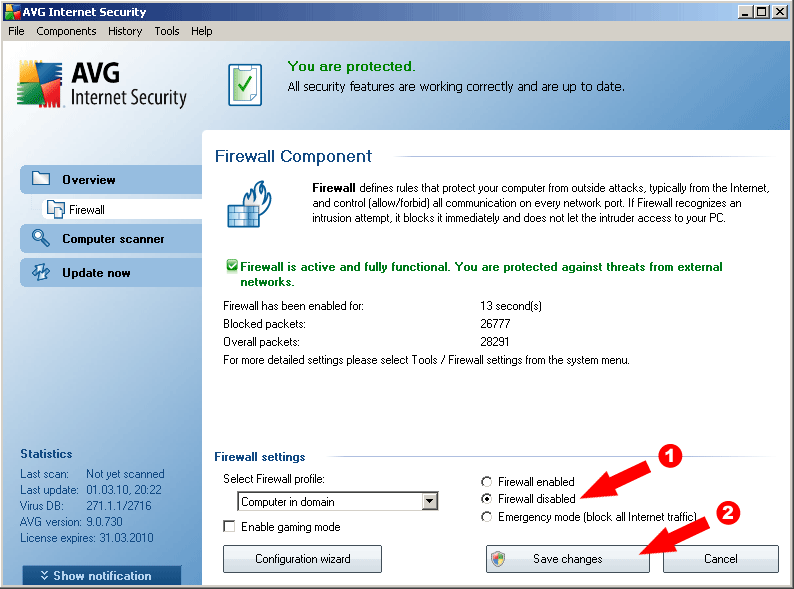AVG Internet Security
Please note: this is legacy documentation. Please check out https://docs.miarec.com/all/ for the most up-to-date documentation and user guides.
AVG Internet Security Firewall blocks the network traffic from external VoIP adapters/phones. Because of this, the call recording is not possible until AVG Firewall is disabled. MiaRec just doesn't see the network traffic, which is sent by VoIP adapter/phone. Unfortunately, this firewall has very basic configuration options* and there is no way to use it together with MiaRec.
* - This information is valid for AVG v.9.0.730 released on the 1st of March 2010.
If you need to record calls, disable it or choose another firewall application. The below screenshot shows how to disable the AVG firewall.

